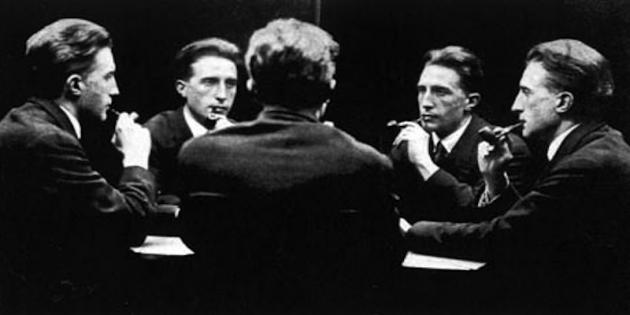This spring the Barbican celebrates Duchamp with a major cross-arts season. The public are invited to explore both his work and that of his precursors, collaborators and the generations of artists he influenced across music, dance, theatre, film and visual art.
For many, Marcel Duchamp was the father of conceptual art. The impact of his work, including his Bicycle Wheel and an autographed urinal entitled Fountain, changed the way we think about creativity and blurred the distinction between life and art, embracing chance procedure, provocation, subversion and humour.
At the heart of the season is an exhibition The Bride and the Bachelors: Duchamp with Cage, Cunningham, Rauschenberg and Johns featuring over 90 artworks, including some of Duchamp’s ‘readymades’ and iconic works by Jasper Johns and Robert Rauschenberg. The gallery will also host live and recorded performances of music by John Cage and dance by Merce Cunningham.
In the theatre, Robert Wilson performs his inspired aural and visual homage to John Cage in Lecture on Nothing. You can also journey into the surreal and absurd with Alfred Jarry’s anarchic fantasy Ubu Roi from Cheek by Jowl, a physically impactful production of Eugène Ionesco’s Rhinoceros, and a virtuosic performance by Barry McGovern in an adaptation of Samuel Beckett’s Watt.
Born in Normandy, Marcel Duchamp was the son of a notary and the younger brother of the painter Jacques Villon and the Cubist sculptor Raymond Duchamp-Villon. He studied at the Académie Julian in 1904-5. His early figure paintings were influenced by Matisse and Fauvism, but in 1911 he created an individual brand of Cubism combining earthy colours, mechanical and visceral forms, and a depiction of movement which owes as much to Futurism as to Cubism. His Nude Descending a Staircase, No.2, 1912 (Philadelphia Museum of Art), created a sensation at the 1913 New York Armory Show. Duchamp did very little painting after 1912, creating the first of his ‘readymades’ in 1913. These were ordinary objects of everyday use, sometimes slightly altered, and designated works of art by the artist. His earliest readymades included Bicycle Wheel (1913), a wheel mounted on a wooden stool, and a snow shovel entitled In Advance of the Broken Arm (1915). One of his best-known pieces is a urinal, titled Fountain and signed ‘R. Mutt’, which he submitted to an exhibition of the Society of Independent Artists in New York in 1917. In the ensuing controversy, the concept of the readymade became associated with an assault on the conventional understanding of the nature and status of art. Duchamp also used readymades as parts of a private symbolic language. He spoke of how using prefabricated objects freed him from the ‘trap’ of developing a particular style or taste.
Duchamp lived mainly in New York from 1915 to 1923, in Paris from 1923 to 1942, and returned to New York in 1942. His friendship with Man Ray led to their publication of New York Dada in 1921. From 1915 to 1923 he worked on The Bride Stripped Bare by her Bachelors, Even (The Large Glass) , which he considered his most important single work. It was shown at the International Exhibition of Modern Art at the Brooklyn Museum in 1927, but was badly damaged on its return journey. Duchamp repaired and partially remade it in 1936, and the piece is now in the collection of the Philadelphia Museum of Art.
In 1965-6, Duchamp and Richard Hamilton made a replica of the work (Tate Gallery T02011). Duchamp continued to be a figure of huge importance in the art world. He kept up an interest in experimental film and continued to organise exhibitions, notably the Exposition Internationale du Surréalisme in Paris in 1938. He also devoted much time to playing tournament chess. In the last twenty years of his life, he worked in secret on a three-dimensional realisation of The Bride Stripped Bare by her Bachelors, Even, entitled Etant donnés (Philadelphia Museum of Art).
His first one-man exhibition was held at the Arts Club of Chicago in 1937. He spent many years concentrating his energies into playing chess and died in Paris in 1968.

